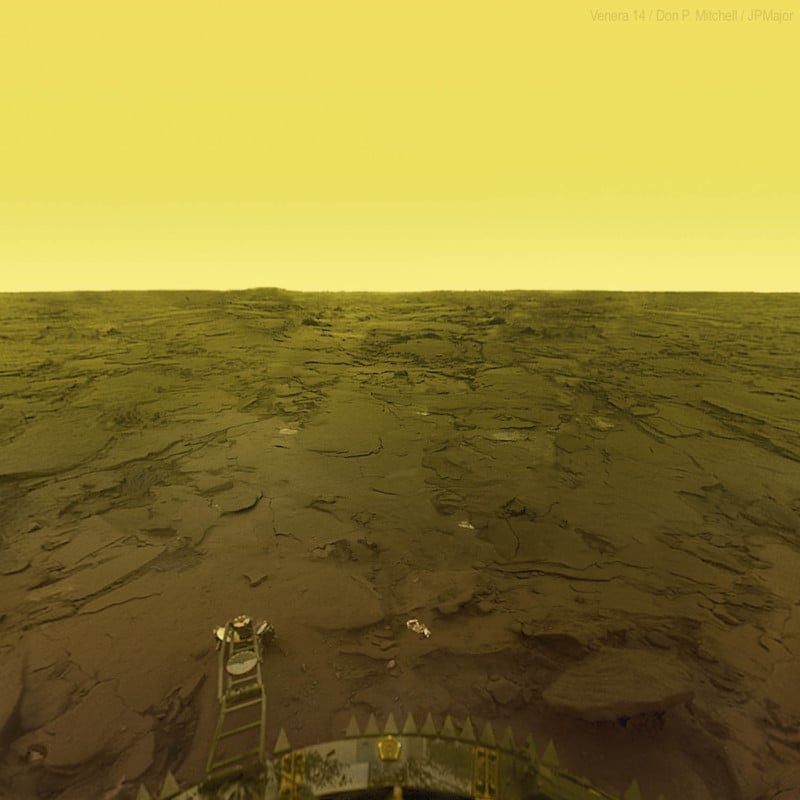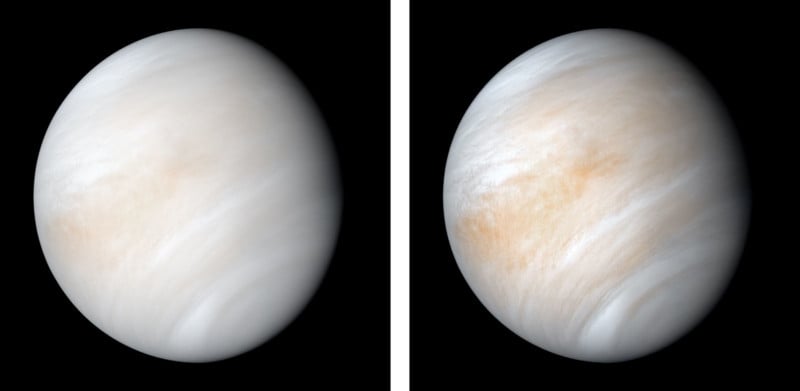These Are the Only Photos Ever Captured of the Surface of Venus
There aren’t many good photos of Venus, and even fewer have been captured from the planet’s surface. Distance alone can’t explain the relative lack of pictures of Earth’s second-nearest neighbor.
The best photos of Venus’ surface were captured more than 40 years ago by a Soviet craft. In space exploration, four decades is a very long time.

Venus is nearly 125 million miles (just over 200 million kilometers) from Earth. While that’s a considerable distance, it’s only about 12 million miles (~19 million kilometers) farther away than Mars, and humankind has performed considerable exploration on the Martian surface.
Earth’s second-nearest neighbor holds more mysteries than one might guess based on its proximity. It’s also a fascinating planet because it’s nearly the same size as Earth and has a similar composition; it’s often called Earth’s “sister” or “twin” planet. In theory, it could have evolved to be like Earth. However, that’s far from what happened.

Image credit: Russian Academy of Sciences. Processing copyright Ted Stryk.
Venus is hostile, as evidenced by the extensive list of failed missions to the planet. Of the first nine missions to Venus, only one, a flyby by NASA’s Mariner 2 spacecraft, was successful. The first successful impact with Venus occurred in 1965 when the Soviet Venera 3 spacecraft succeeded where the Soviet’s previous eight missions had failed. An atmospheric probe by Venera 4 occurred that same year.
The first landing occurred when the Venera 7 touched down on Venus in 1970. The Venera 8 landed two years later. The Venera 9 orbited and touched down on Venus in 1975. The Soviet Union then sent another nine crafts to Venus, with the last, the Vega 2, touching down in 1984.

Image credit: Russian Academy of Sciences. Processing copyright Ted Stryk.
As seen on The Planetary Society, humanity’s best photos on Venus were captured in the early 1980s by the Venera 9, Venera 10, Venera 13, and Venera 14.
On the other hand, NASA, an organization that has undoubtedly earned its stripes in space, successfully performed an impact mission in 1978 with the Pioneer Venus 2 but has never landed on Venus. NASA’s DAVINCI spacecraft is in development to conduct an atmospheric probe in 2031, with two more missions planned in the following couple of years. DAVINCI will focus its study on atmospheric descent but may send surface data “for a few minutes.”

Image credit: Russian Academy of Sciences. Processing copyright Ted Stryk.
While NASA may not have been to Venus, its Mariner 2 was the first spacecraft to visit any planet beyond Earth in 1962 when it performed a 42-minute scan of Venus. That scan revealed a lot about Venus, including its scorching atmosphere. Understanding what happened on Venus may hold insights into how best to protect Earth’s climate.

Image credit: Russian Academy of Sciences. Processing copyright Ted Stryk.
The intense heat on Venus, along with its crushing atmospheric pressure, is what makes Venus’s surface so inhospitable — the surface temperature ranges from about 820 to 900 degrees Fahrenheit (437 to 482 degrees Celsius). Mars is far from easy to explore, but its average surface temperature of -81 degrees Fahrenheit (-63 degrees Celsius) poses significantly less challenge to engineers.
As for the air pressure on Venus, it’s more than 75 Earth atmospheres. Earth and Venus have nearly the same gravitational force, but Venus’ atmosphere is much denser and thicker than Earth’s. The planet’s runaway Greenhouse Effect is dominated by carbon dioxide. Earth and Venus have similar amounts of carbon dioxide in their atmospheres, but Venus has no plants, oceans, or carbonate rocks to help contain it. The carbon dioxide has nowhere to go but the atmosphere.

Image credit: Russian Academy of Sciences. Processing copyright Ted Stryk.
In addition to these black-and-white and colorized versions of Venus with a curved horizon line, there are also processed versions with straight horizons as well. Here’s one remapped by Donald Mitchell and colorized by Jason Major:

If Venus doesn’t instantly burn a spacecraft, it will surely crush it. The Venera 13 holds the honor of lasting longest on Venus, surviving for an impressive 127 minutes.
Venus’s dense atmosphere also makes it impossible to see the planet’s surface from space, at least in the visible spectrum. The only way to capture visible-light images is by landing on the surface, which is remarkably challenging. Surviving on the surface is impossible.

Image credit: NASA/JPL-Caltech
If humanity ever captures better images from Venus’s surface, they will have been a long time coming.
Image credits: Russian Academy of Sciences.